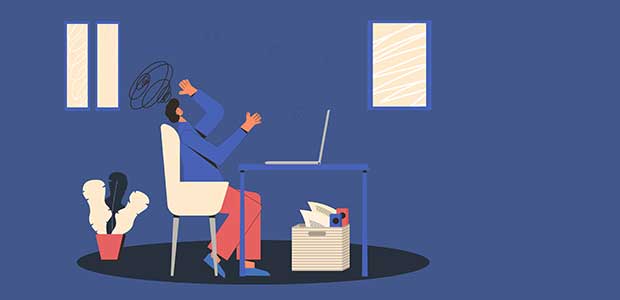
Three Ways to Foster Workplace Mental and Physical Health During a Pandemic
Remote work isn’t likely to go away anytime soon, and neither should the focus on physical and mental health in the workplace.
- By Joey Owens-Barham
- Sep 14, 2020
As employees continue to work remotely during COVID-19, they can become overwhelmed by various factors in their lives that are made more challenging by the pandemic. This can include anything from feeling isolated to being distracted by roommates, kids, or pets. As organizations navigate the remote work model, they must recognize these challenges and proactively meet the needs of their employees, providing resources to strengthen their mental and physical health.
Prioritizing the mental and physical health of employees is key, not only during a pandemic, but in the future as well. By emphasizing the importance of the mental and physical health of your employees, you are showing them that you care about them as people instead of just placing value on the work they do.
For companies who are struggling to make this happen or don’t currently have a plan in place to help their team face these challenges, here are three ways to get started.
Practice Flexibility
How can companies start to focus more on their employees’ well-being? The first way that this can happen is by allowing employees to set their own schedule. According to a recent remote work survey conducted by FormAssembly, 45 percent of remote workers surveyed worked a 9 a.m. to 5 p.m. schedule, while 31 percent worked from 8 a.m. to 4 p.m. and 11 percent worked from 7 a.m. to 3 p.m. Allowing employees to work when they are most productive will give them a sense of empowerment and will yield better results for your company, as employees are happier and have a better work output when they have the freedom to work their own hours.
Flexibility is also important to keep in mind when employees are allowed to return to the office, as 67 percent of survey respondents said they want to keep the same hours they had while working remotely while only 33 percent said they want to keep a typical workday schedule. Allowing a hybrid model of remote work and in-office work can help maintain flexibility even after the pandemic.
Encourage Culture and Community through Activities
Cultivating company culture is also important for keeping employees engaged. According to the FormAssembly survey, there are several ways that organizations work to engage and retain employees, including virtual activities such as coffee talks (37 percent), happy hours (35 percent), and other activities such as art lessons or baking (19 percent). By keeping employees engaged, they’re less likely to feel isolated and more likely to feel connected to their teams, allowing for your company’s remote culture to flourish.
Remote workers can also get a sense of community through regular video chats, Slack channels, or other communication tools. In fact, according to FormAssembly’s survey, Zoom was the preferred communications tool (44 percent), followed by Slack (33 percent) and Microsoft Teams (24 percent). These communication tools help remote workers connect better with their teams and build relationships, leading to a stronger sense of community and connection within the workplace.
Another way that employers can place a greater focus on employees’ well-being is to encourage company-wide physical and mental health activities. For example, respondents in the survey said their companies participate in activities such as exercise, yoga, meditation, and mental health check-ins to make sure teammates are staying healthy. By checking in with your team and making sure they are in good shape physically and mentally, you are reiterating the importance of physical and mental well-being to your team members while making them feel valued.
Establish Company-Wide Initiatives
Team building is an important part of any workplace, especially when the team is remote. One way to get the whole company together and foster team building and friendships is through company-wide reunions or retreats. FormAssembly has been a remote company since its founding in 2006, and we have company-wide and departmental reunions each year to strengthen our company culture. While in-person events like these may not be possible during the pandemic, we’ve figured out how to keep the tradition alive.
This year, we decided to hold a virtual reunion, continuing with our annual tradition from afar. In this new virtual setup, team members spent a portion of their work hours participating in virtual reunion activities of their choice. Some of these activities included remote wine tasting, fitness classes led by Olympic athletes, a virtual escape room, and virtual cooking and baking classes. Though most companies aren’t able to gather together in person this year, it’s still important to find ways to bring the team together.
Remote work isn’t likely to go away anytime soon, and neither should the focus on physical and mental health in the workplace. Because so much has changed in the last few months, employers need to continue to be understanding of the new challenges affecting their teams. By following these best practices, employers are able to make sure everyone in the workplace feels valued and empowered to do their best work, even in difficult circumstances.